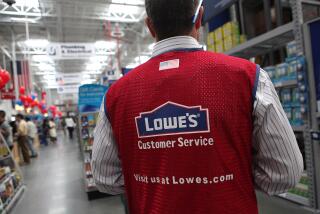Facebook is giving you a peek at how it combats workplace inequality

Sheryl Sandberg, chief operating officer of Facebook, attends the Allen & Company Sun Valley Conference on July 8, 2015, in Sun Valley, Idaho.
- Share via
When Facebook reported on the diversity of its workforce this year, the numbers weren’t good.
Like most of the technology industry, its overall workforce was primarily white and male, and women accounted for only 16% of its global technical workforce.
But the social network is trying. In fact, it’s eager to show everyone just how hard it’s trying by releasing to the public a “Managing Unconscious Bias” video used to train Facebook employees.
“At Facebook, we’ve worked with leading researchers to develop a training course that helps people recognize how bias can affect them, and gives them tools to interrupt and correct for bias when they see it in the workplace,” Facebook’s chief operating officer, Sheryl Sandberg, said on the Facebook blog. Sandberg herself is best-known as the author of “Lean In,” a self-help book about women taking control of their careers.
The video is only one component of Facebook’s training course; Sandberg said the company also offers workshops.
The hourlong video, similar to the unconscious bias training video offered by fellow tech giant Google, tackles themes such as the significance of first impressions, the harm of stereotypes, the types of biases that exist and ways people can counteract them.
“Some of it will be uncomfortable to hear,” Facebook’s global director of diversity, Maxine Williams, says at the beginning of the video presentation. “It was uncomfortable to think about, far less to think about uttering. But we think that if we push through the discomfort, we get to that better place where we can do something about it.”
The video, which Sandberg said companies and individuals can use as a starting point to customize their own training, promotes solutions such as having individuals check their biases, creating objective metrics against which people are judged and having people call out biases when they see it.
“Small changes can make a big difference,” said the company’s learning and development leader, Mike Rognlien.
Twitter: @traceylien







